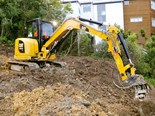Protranz' remote-controlled excavators
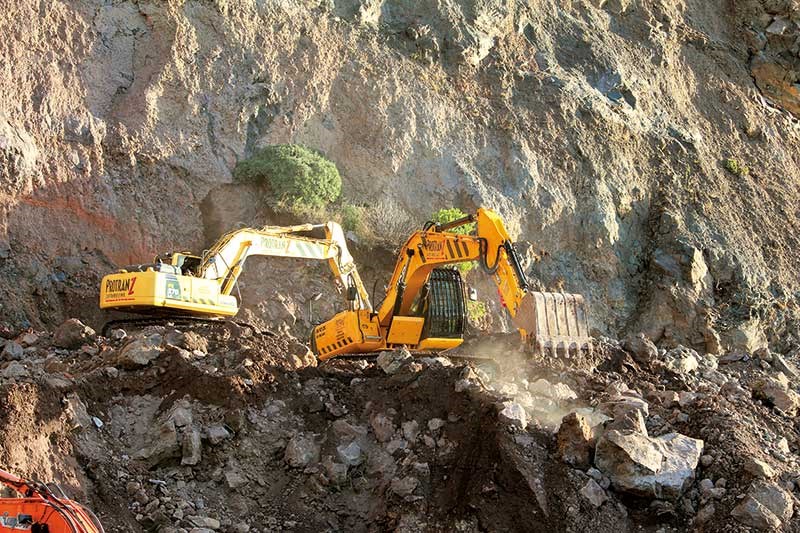

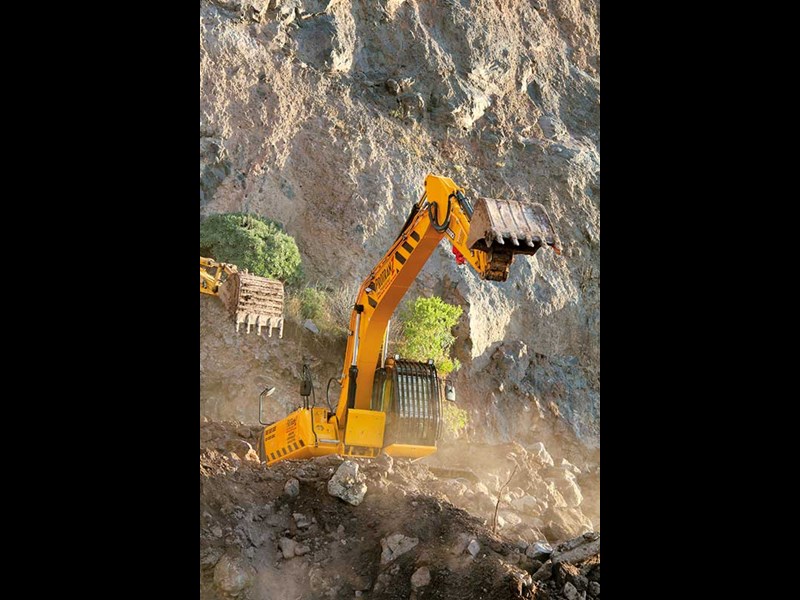


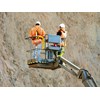

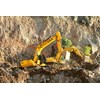
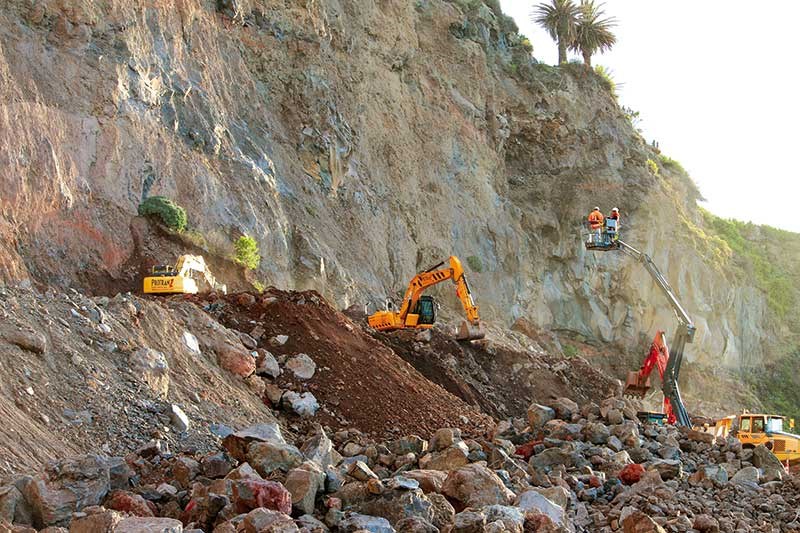


|

|

|

|

|
Operating remote-controlled excavators is way more serious than some video game, especially when expensive equipment is at stake.
It’s pretty easy to work out why Protranz Earthmoving Ltd has got its gear on the Sumner worksite we are visiting today. Firstly, Gerard Daldry’s business is the only one with remote-controlled excavators; and secondly, no corporate bean counter would allow machinery like this to operate directly below thousands of tonnes of unstable rock with no insurance cover.
"Yeah, no insurance company in its right mind would want to insure these machines in this type of work," says Daldry.
With the combined total of his two machines adding up to close to a couple of million dollars, it is people like this that I admire for having the guts to take on work that many others would not be up for.
The two obvious aces up his sleeve on this job are the remotely controlled Komatsu PC270LC-8 and JCB JS220 excavators. Even though these machines look like toys when viewed from our safe vantage point, they are decent pieces of kit covering the 20- to 30-tonne size range. Both excavators, along with another similarly set-up machine, form the basis of Daldry’s remote-controlled arsenal and are undertaking work in Christchurch that is far too dangerous to access with conventional equipment.
Operators Ivan Manuel and Vaughan Breen are doing the business on the day of our site visit. Tucked safely away from danger atop an extended-out hydraulic access platform, the two are tasked with removing rock to create a catchment area; it being designed to prevent any future rock falls closing the busy seaside arterial route that runs between the suburbs of Woolston and Sumner.
Watching the excavators at work, it would be difficult to realise that there are no people in them and Daldry says that it takes considerable skill to effectively operate a machine remotely.
"One advantage of having the two operators standing side-by-side is that they can discuss the current task at hand.
"This not only makes the site safer, but ensures the machinery is protected the best it can be," as he points to an area of unstable rock sitting on the cliff face directly above one of the excavators.
I suggest that it must get quite chilly for the operators standing on a work access platform all day, but Daldry says that there is a nearby closed-in area to work from when the weather turns nasty. It may not still be as nice as an air-conditioned cab, but is sure to be a heck of a lot warmer than their current exposed position.

Setting up the excavators to be remotely operated has been a project undertaken exclusively by Daldry and his technical crew. The massive task of doing this has been refined over each machine to something that now contains a considerable amount of intellectual property, and as such the three main systems are built by different companies to ensure Daldry remains in control of the end product.
With no ‘actual’ operators in the machines, vital statistics are monitored remotely from the Protranz HQ. Any noticeable change in each machine’s operating status is quickly passed onto the operator for further evaluation.
"We were wondering why there was a change in operating temperature occasionally, and it had us stumped until we realised that when the wind was blowing off the sea [across the road], it would spike our readings.
"It shows how sensitive our monitoring equipment is," says Daldry.
Other safety features built into the excavators are a myriad of proprietary systems, anti-drop valves, and 13mm plate guarding on the underside of each machine. However, for a user climbing into the cab of one of these machines, they would not notice anything different from a conventional model, with the exception of a switch to change the operations from manual to remote control.
"So, if we wanted to use a machine as a normal excavator, it’s just a matter of jumping in and flicking a switch," says Daldry.
Now four years after building the first machine, the fruit of all those late nights and labour is beginning to pay off with interest being expressed by excavator makers, necessitating some offshore trips to further develop the project. In fact, on the day of our visit, Daldry has not long returned from a trip to Europe to further discuss his project with a manufacturer and is about to head off the next day to Nepal, where he is helping demolish some technically challenging buildings.
Since establishing the company in 1997, Daldry has grown the Protranz business to a sizeable operation and its well turned-out gear can be seen on many sites in the region.
So, between building remote-controlled excavators, winning World Demolition Awards for innovation, demolishing buildings in far-away countries and running a successful contracting business; one has to admire the drive and tenacity that keep this Kiwi-made company and its owner at the forefront of advancing technology.
Keep up to date in the industry by signing up to Deals on Wheels' free newsletter or liking us on Facebook.



